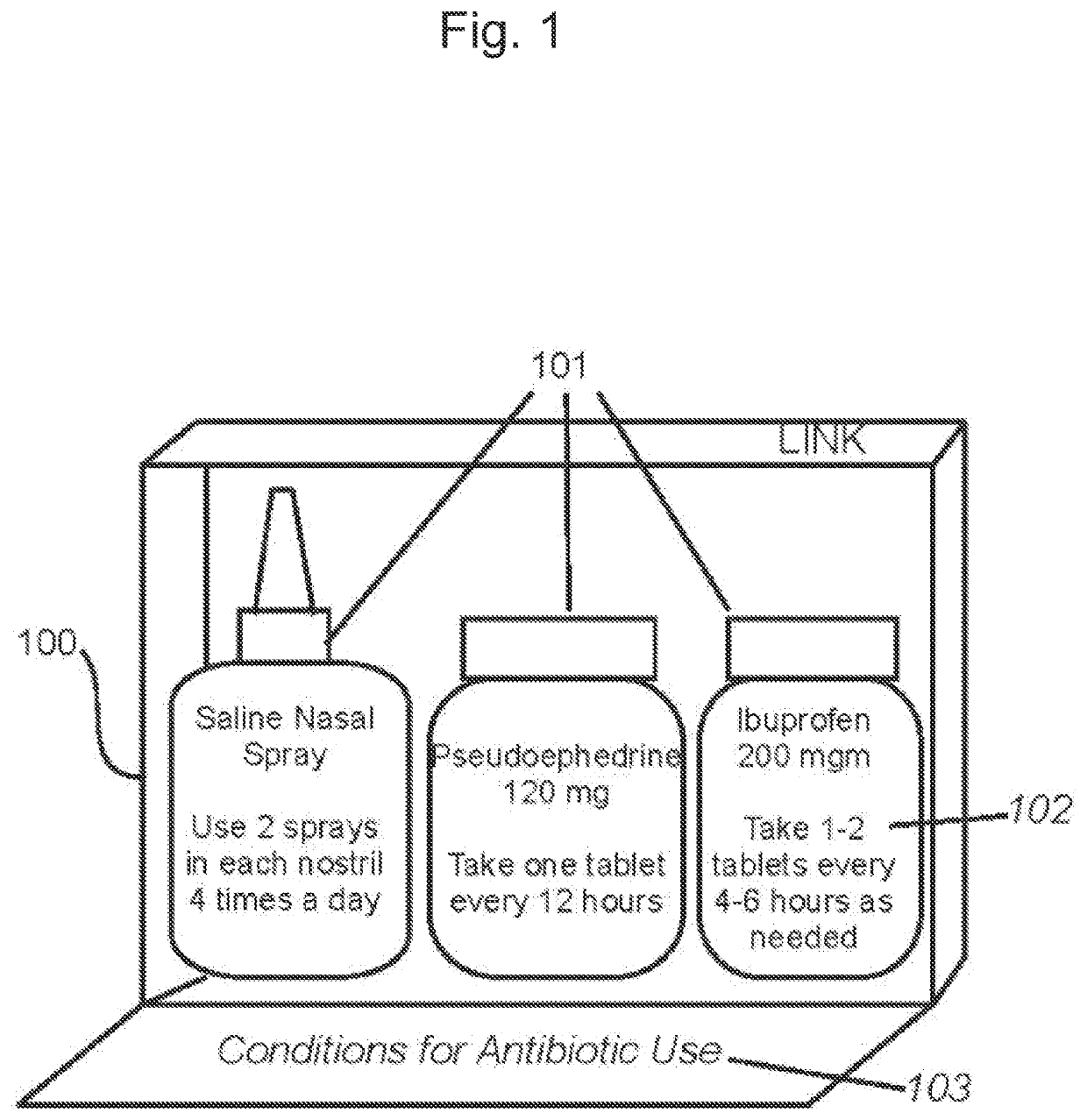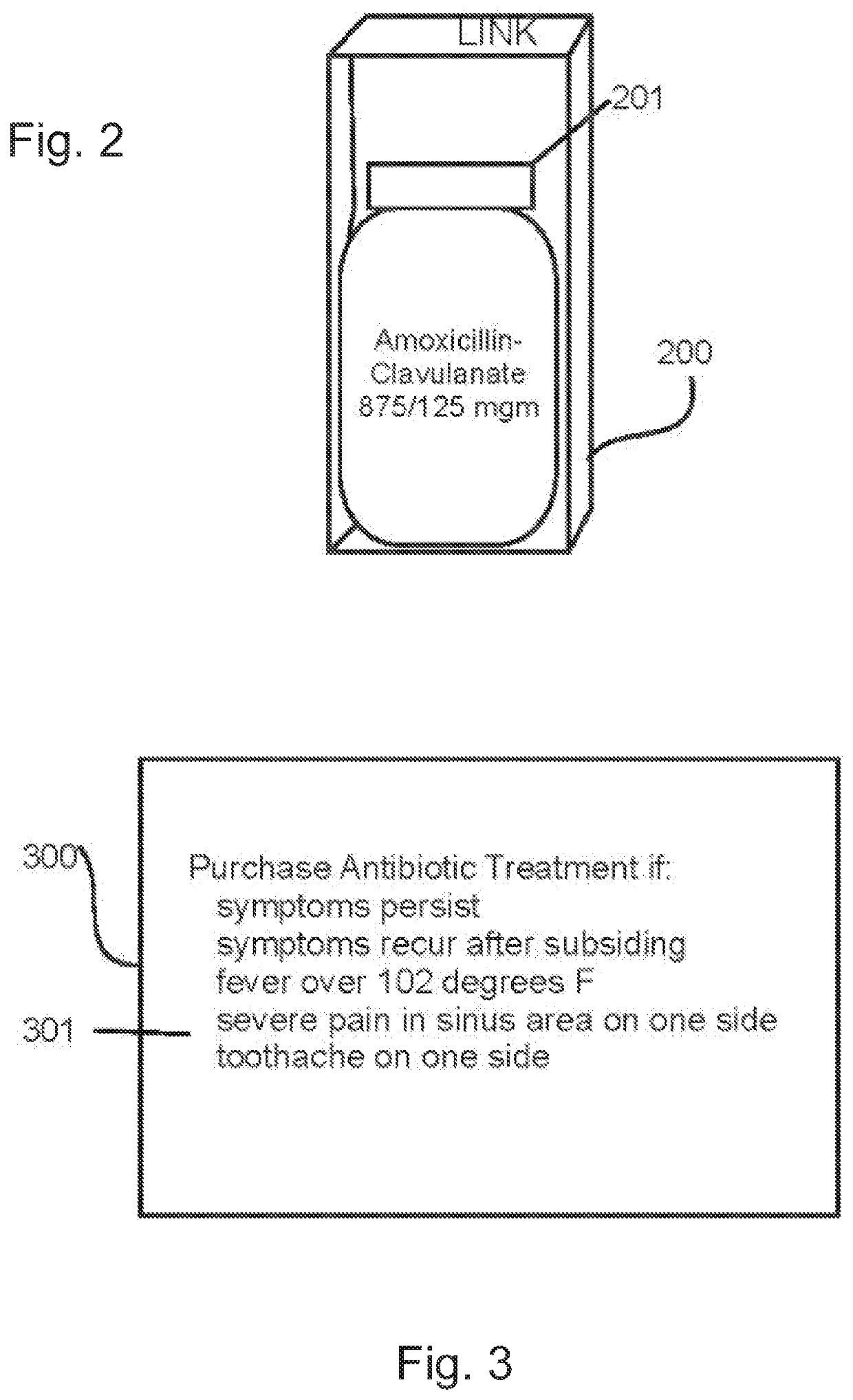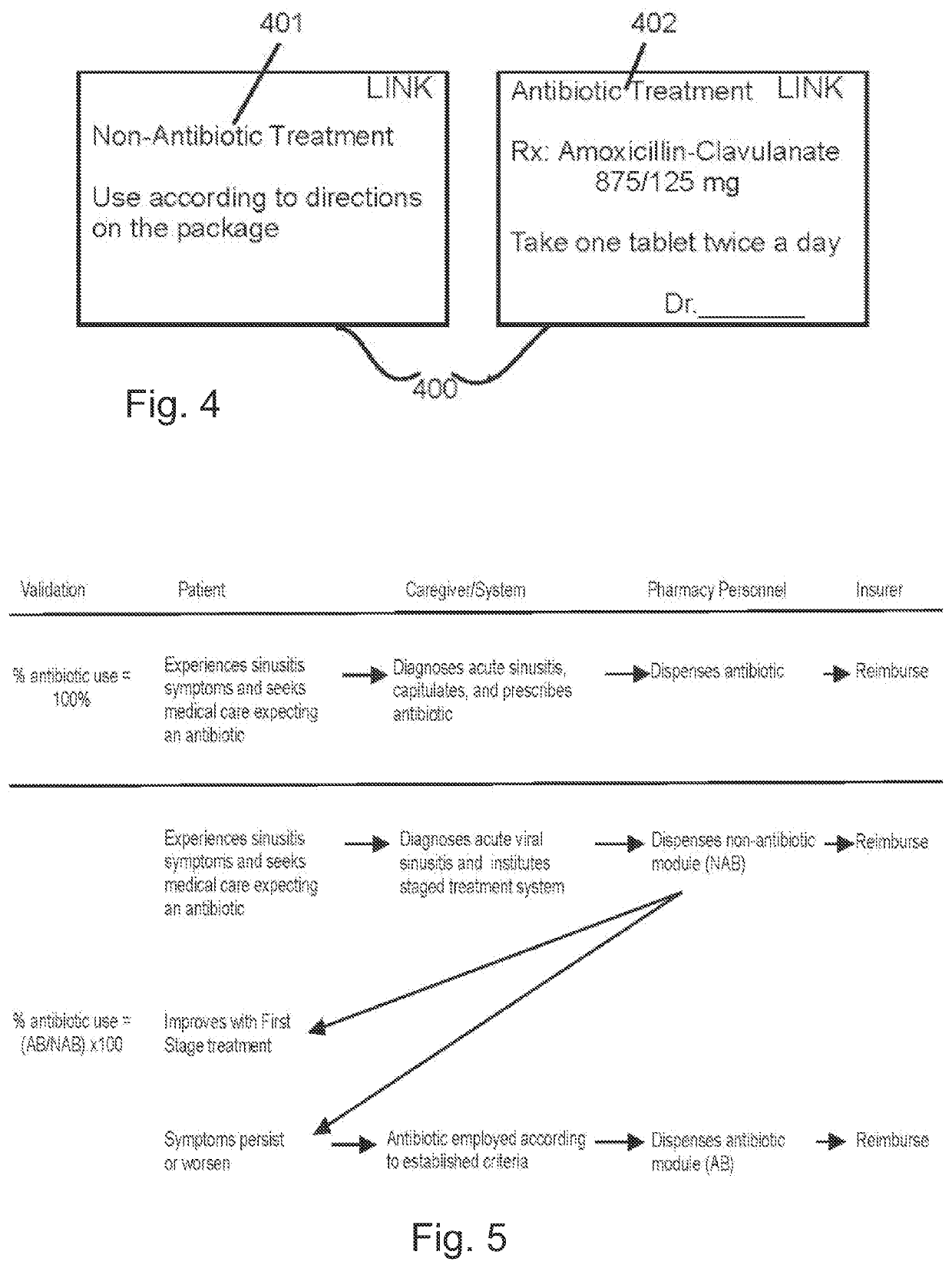Method and device for preventing microbial resistance
a technology of microbial resistance and antibacterial agent, applied in the field of microbial resistance, can solve the problems of less effective ordinary treatment, and achieve the effect of facilitating non-antibiotic treatment and minimizing clinical interactions
- Summary
- Abstract
- Description
- Claims
- Application Information
AI Technical Summary
Benefits of technology
Problems solved by technology
Method used
Image
Examples
example 1
[0073]Pseudoephedrine 120 mg and Guiafenesin 1200 mg tablets instructed to be taken b.i.d. (twice a day);[0074]Saline nasal spray or wash instructed to be used as needed to wash and moisten the nasal passages and nasal secretions;[0075]Ibuprofen 200 mg every six hours as needed for discomfort or pain; and[0076]Benzonatate 200 mg capsules every 8 hours as needed for cough.
[0077]This regimen utilizes the prescription medication benzonatate to address cough, a frequent concomitant of acute rhinosinusitis.
[0078]Pseudoephedrine is intended to decongest the nasal passages, guiafenesin for its mucolytic and expectorant actions, and saline for moistening nasal secretions.
example 2
[0079]Oxymetazoline 0.05% nasal spray, instructed as two sprays in each nostril b.i.d. for three days;[0080]Saline nasal spray or wash instructed to be used frequently as needed to wash and moisten the nasal passages;[0081]Guiafenesin 1200 mg extended release tablets, instructed to be taken BID to decongest the nasal passages and moisten secretions;[0082]Ibuprofen 200 mg instructed to be taken every six hours as needed for discomfort or pain; and[0083]Levocetirizine 5 mg at bedtime.
[0084]Levocetirizine is a second-generation antihistamine dispensed by prescription that retains sedating and anticholinergic properties giving it similar properties to a first-generation antihistamine. It's half-life is 8-9 hours and FDA label is for bedtime dosing.
[0085]This regimen utilizes the topical nasal decongestant oxymetazoline, to maintain nasal patency, that is ordinarily dispensed OTC. The confusion encountered by patients when selecting treatments from the OTC shelf is exemplified in [0032] ...
example 3
[0086]Pseudoephedrine 120 mg and Guiafenesin 1200 mg tablets instructed to be taken b.i.d. to decongest the nasal passages and moisten secretions;[0087]Saline nasal spray or wash instructed to be used frequently as needed to wash and moisten the nasal passages;[0088]Ibuprofen 200 mg instructed to be taken every six hours as needed for discomfort or pain;[0089]Zinc lozenges 10 mg, one every 4 hours.[0090]Homatropine methyl bromide and hydrocodone, one tablet every 6 hours for cough.
[0091]This regimen addresses viral illness with zinc that is thought to ameliorate severity and length of upper respiratory viral infection, and also addresses cough that frequently accompanies acute sinusitis with homatropine-hydrocodone, a prescription cough suppressant.
[0092]The present application is made in view of the ordinary activities that relate to antibiotic prescribing and microbial resistance in the United States. These are exemplified by the activities of the National Task Force of Combating ...
PUM
| Property | Measurement | Unit |
|---|---|---|
| microbial resistance | aaaaa | aaaaa |
| antimicrobial resistance | aaaaa | aaaaa |
| Antibiotic resistance | aaaaa | aaaaa |
Abstract
Description
Claims
Application Information
 Login to view more
Login to view more - R&D Engineer
- R&D Manager
- IP Professional
- Industry Leading Data Capabilities
- Powerful AI technology
- Patent DNA Extraction
Browse by: Latest US Patents, China's latest patents, Technical Efficacy Thesaurus, Application Domain, Technology Topic.
© 2024 PatSnap. All rights reserved.Legal|Privacy policy|Modern Slavery Act Transparency Statement|Sitemap



